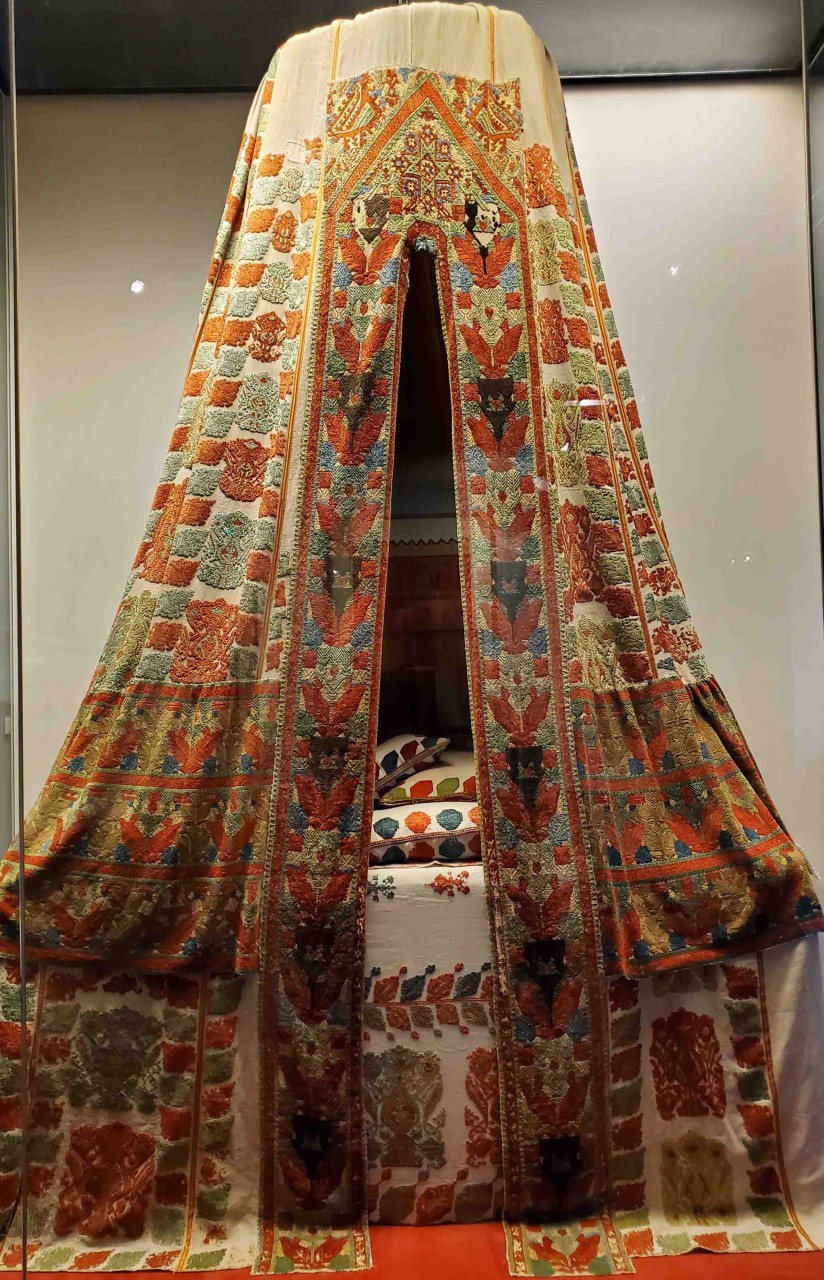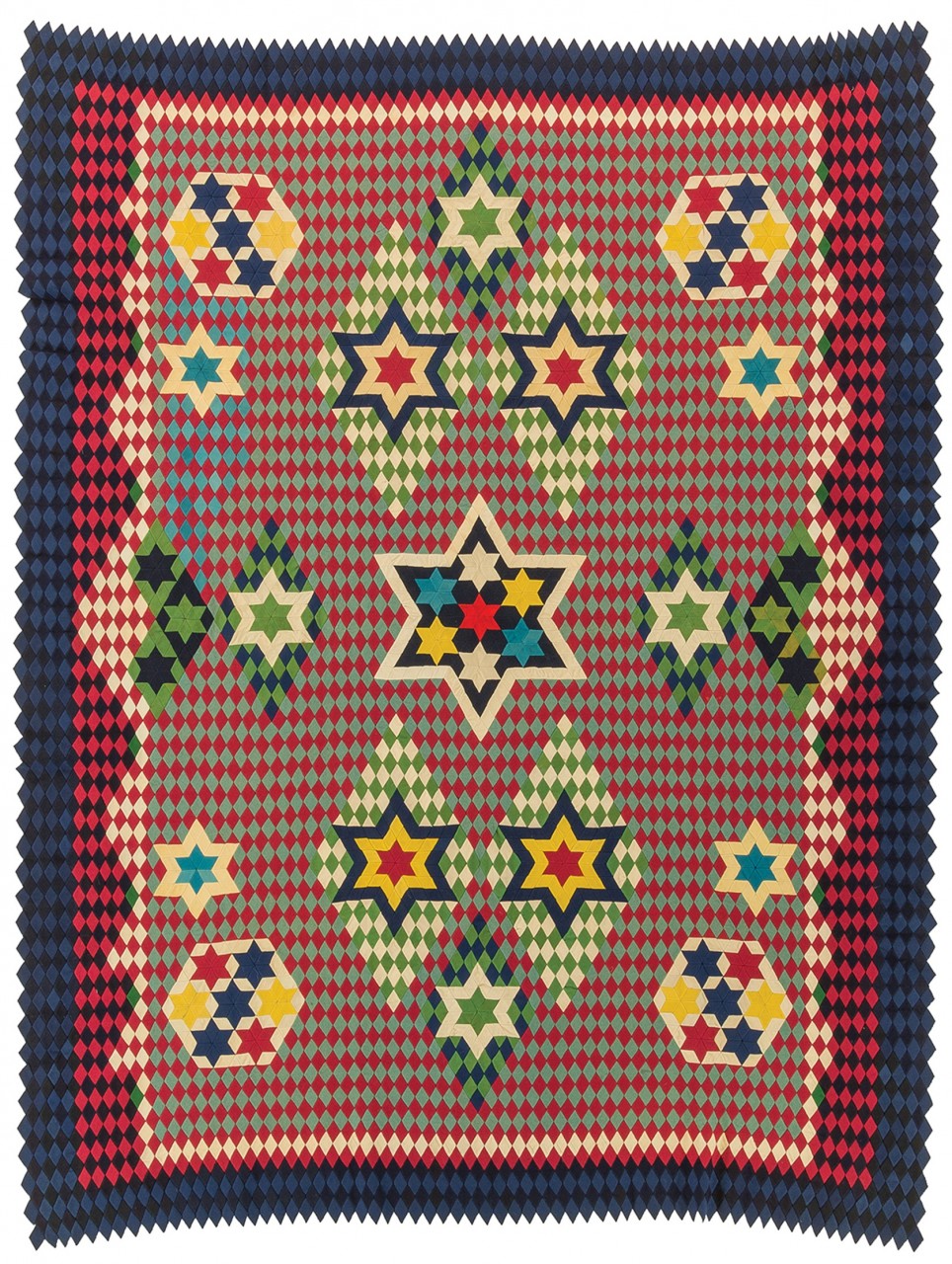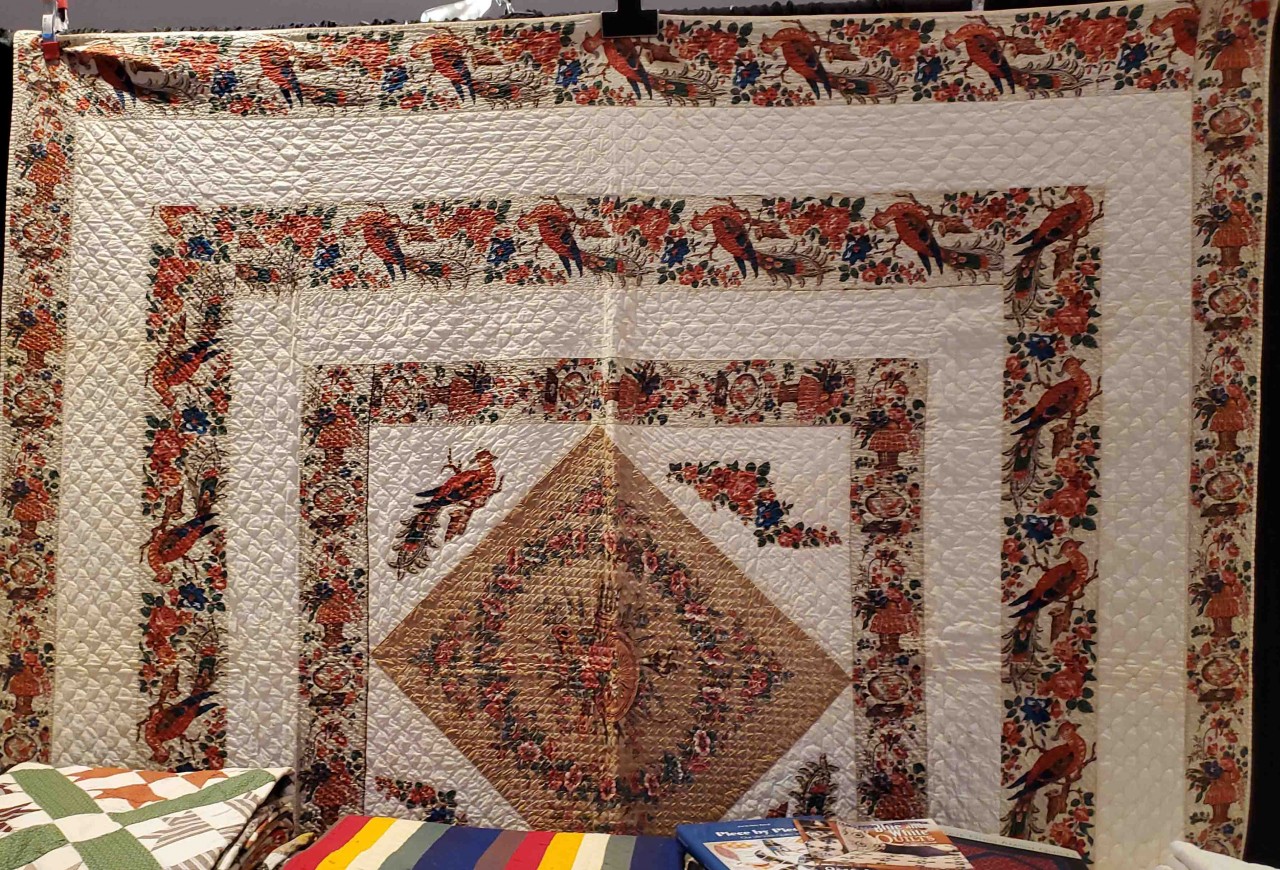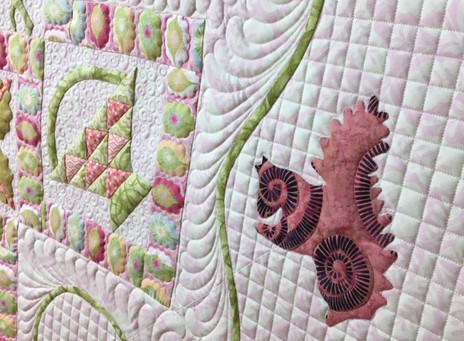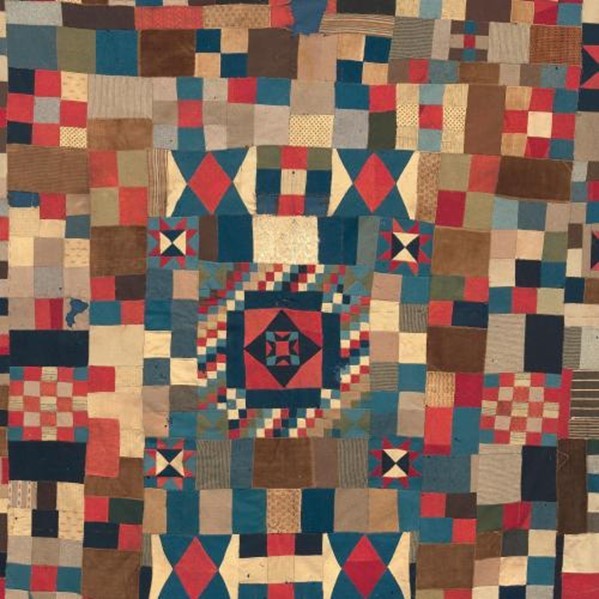
Continuing our exploration of Geometric military textiles, we’ll start with the Wool In-laid Patchwork Quilt Top composed of wool broadcloth, printed wools, cotton corduroy, silk plush, and other wools used in men’s clothing, with the red and blue fabrics are thought to be from military uniforms. Barnet Kobler, who served in the Ninth Pennsylvania Regiment, stated in his application for pension that he made uniforms for the troops during the American Revolution and some fabrics could be from revolutionary uniforms. However, since most of these fabrics date from the 1790s, many of the military fabrics are more likely militia not from the Revolutionary War. Additionally, even though the quilt top is called an “inlaid patchwork,” also known as intarsia, on closer examination the quilt is constructed using a variety of techniques. Traditional piecing and applique are...


